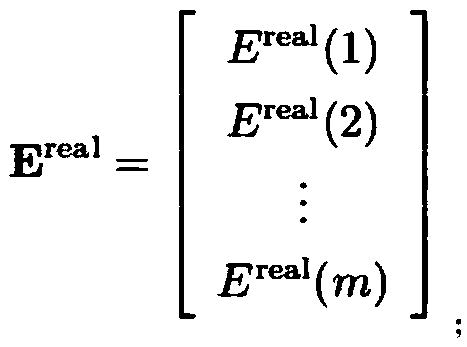Method for calculating water molecule energy based on molecular degree-of-freedom depth learning
A technology of deep learning and water molecules, applied in the field of molecular energy calculation, can solve problems such as difficult to obtain satisfactory results, and achieve the effects of avoiding convergence problems, reducing influence, and accurately calculating results
- Summary
- Abstract
- Description
- Claims
- Application Information
AI Technical Summary
Problems solved by technology
Method used
Image
Examples
Embodiment 1
[0037] A method to calculate the energy of water molecules through deep learning, using the spatial coordinates and corresponding energies of 1000 water molecules in different configurations. The change range of the two hydrogen-oxygen bonds of water molecules is The range of bond angles is 104.2±8.59°. Directly train the molecular energy with the molecular configuration, randomly select m configurations and corresponding energies as the training group, and the remaining 1000-m configurations and corresponding energies as the test group, calculate the energy of water molecules, and verify the correctness of the training results.
[0038] Transform the molecular space coordinates of the training group into two hydrogen-oxygen bond lengths (r O-H1 , r O-H2 ), the molecular bond angle (θ) and the reciprocal of the distance between the three atoms (1 / r O-H1 ,1 / r O-H2 ,1 / r H1-H2 ), each configuration parameter constitutes an independent six-column configuration parameter matr...
Embodiment 2
[0064] This embodiment provides a preferred solution of the hardware platform and software environment of the present invention.
[0065] Choose the low-end i5-6500 CPU@3.20GHz / NVIDIA Corporation GK208 [GeForce GT730] / 4G Mem hardware platform to obtain higher general performance; the software environment is Linux kernel 4.9 / TensorFlow-GPU 1.8.0 (via pip installed), the driver is CUDA 9.0 / cuDNN 7.1.
Embodiment 3
[0067] This embodiment provides a preferred scheme for selecting input data in the present invention.
[0068] Using the water data set provided by Brockherde et al., the data set contains the configuration of 1000 water molecules and the energy corresponding to one of them. The configuration is expressed by Bohr positions, and the energy unit is kcal / mol. This approach avoids the use of gradient descent to compute the minimized total energy while ensuring that the accuracy of molecular energies improves with larger training sets, and compares the results with those computed using the standard DFT approximation (PBE). The water molecule parameters are set to three: two bond lengths and one bond angle. According to the PBE results, the optimized water molecular configuration ( θ 0 =104.2°) is the starting point of training, at and ±8.59° to generate random combination configurations.
PUM
 Login to View More
Login to View More Abstract
Description
Claims
Application Information
 Login to View More
Login to View More - R&D
- Intellectual Property
- Life Sciences
- Materials
- Tech Scout
- Unparalleled Data Quality
- Higher Quality Content
- 60% Fewer Hallucinations
Browse by: Latest US Patents, China's latest patents, Technical Efficacy Thesaurus, Application Domain, Technology Topic, Popular Technical Reports.
© 2025 PatSnap. All rights reserved.Legal|Privacy policy|Modern Slavery Act Transparency Statement|Sitemap|About US| Contact US: help@patsnap.com



